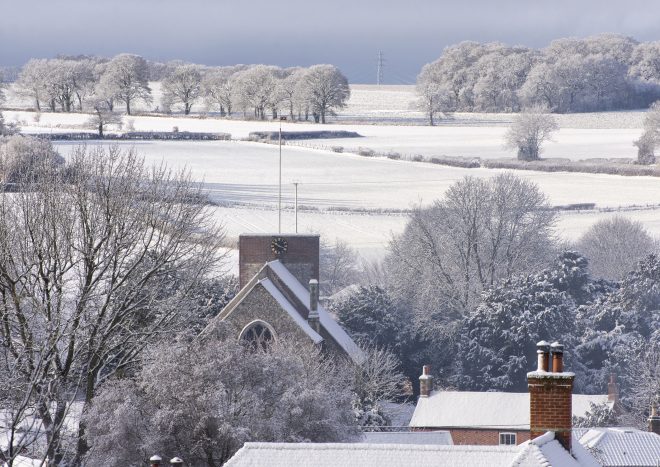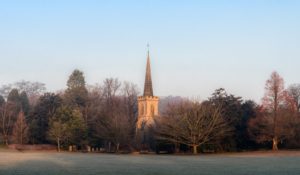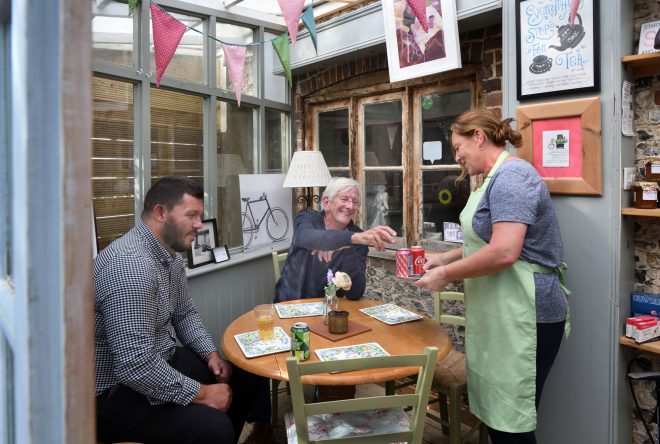Winter planning newsletter: Pillars of planning remain firm in a year of change
December 15, 2022

Looking back on a busy and productive 2022 for the Planning Authority, I’m reflecting on some broad themes that are consistent in planning year after year. It’s certainly been a year of promised change, as well as challenges and uncertainty in the UK and abroad, with a long list announcements that have an impact on planning in one way or another (the fracking U-turn springs to mind).
Yet the core of planning remains the same.
We operate on three broad fronts and we must never lose sight of these pillars: managing and enabling growth; conserving and enhancing the best of what we have; and social equity in the environment. These themes apply to both urban and rural areas, albeit with different considerations.
With this in mind, I often come back to the stark reality that whilst we live in a highly urbanised country, over 90 per cent of the UK landmass is countryside. What we do in the rural sphere is massively important especially if we can increase access to the countryside. The work of Planning Authorities with large swathes of countryside – and furthermore as custodians of nationally-important landscapes – is therefore very meaningful at local, regional and national scale.
 As I write, a report from the House of Lords Land Use in England Commission has been published. I gave evidence to this work and the report lays out their priorities for a land use framework, which would broadly divide up the land in England and decide where is best for different types of agriculture, as well as carbon sequestration, nature restoration and recreation. This directly relates to the three pillars outlined above. Just as importantly, the report advises access to green space should be prioritised when deciding how to use land, whether through the Planning system or otherwise. Greater access is necessary, with the all-party parliamentary group advising that this is ‘’important for health and wellbeing, especially in urban and peri-urban locations near where people live”. This is so relevant to the South Downs National Park and the many millions who live in or close by it.
As I write, a report from the House of Lords Land Use in England Commission has been published. I gave evidence to this work and the report lays out their priorities for a land use framework, which would broadly divide up the land in England and decide where is best for different types of agriculture, as well as carbon sequestration, nature restoration and recreation. This directly relates to the three pillars outlined above. Just as importantly, the report advises access to green space should be prioritised when deciding how to use land, whether through the Planning system or otherwise. Greater access is necessary, with the all-party parliamentary group advising that this is ‘’important for health and wellbeing, especially in urban and peri-urban locations near where people live”. This is so relevant to the South Downs National Park and the many millions who live in or close by it.
The report is also critical of the current UK farming system. Jake Fiennes, the director of Holkham nature reserve in Norfolk, told the commission that “current agricultural and farming practices are generally unsustainable for the medium to long term. Our reliance on synthetic inputs and the effects they have on the wider environment are all too clear”.
As with Planning, the report criticises the government for uncertainty around the post-Brexit farming payments, which are supposed to deliver nature recovery. Details around these have been delayed, with reports that the initially ambitious schemes are set to be weakened. Seems to echo the much-heralded Planning reforms!
All of the emerging and promised changes through a myriad of Acts, Bills and a promised consultation on the National Planning Policy Framework before Christmas mean we have to be adaptable. With Local Nature Recovery Strategies starting in earnest next April and mandatory Biodiversity Net Gain next November, we as planners will have to grapple with and, ultimately, deliver on this mix of land use and land management.
Our emphasis at the National Park Authority will rightly, continue to be proper placemaking and nature recovery. A healthy rural economy, with opportunities for all and embracing well-measured growth, ultimately feeds a healthy rural environment and visa versa.

As I write this, it’s been announced by the Government that housing targets will be advisory and Local Planning Authorities will be allowed to be build fewer homes if they can show that hitting the target would significantly change the character of an area.
National Parks, of course, do not have “housing targets”. But nevertheless I believe this general policy shift is a positive step in the right direction, championing the benefits of localism. Working with communities through engagement in many areas can deliver better results. This is evidenced by the National Park’s successful approach to neighbourhood planning. It’s a real achievement that 40 Neighbourhood Development Plans are now incorporated into the South Downs Local Plan.
Talking of achievements, there are a couple I would like to touch on briefly:
- The National Park Authority winning a Chair’s Award from the Royal Town Planning Institute for our record in helping to deliver greener planning was a highlight of 2022 for me. To receive this endorsement means a lot, particularly because it relates to our overall strategy, development plan and implementation on the ground, rather than any specific policy document or development.
- We’ve collaborated successfully with other National Parks and Areas of Outstanding Natural Beauty (AONBs) in the planning sphere and as referred to above gave evidence to the House of Lords Select Committee on land use. Long may this kind of joined-up thinking continue!
Many thanks and I hope all have a well-deserved Christmas break.
 Tim Slaney,
Tim Slaney,
Director of Planning, South Downs National Park Authority
